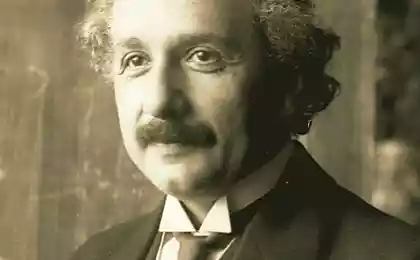615
Relativity Theory for Dummies

Albert Einstein
Space and time are one, there is a connection between mass and energy – special relativity, which at the beginning of the last century overturned the generally accepted ideas about the world, still continues to excite the minds and hearts of people.
In 1905, Albert Einstein published the Special Theory of Relativity (SRT), which explained how to interpret motions between different inertial frames of reference – simply put, objects that move at a constant velocity with respect to each other.
Einstein explained that when two objects move at a constant velocity, one should consider their motion relative to each other instead of accepting one as an absolute reference frame.

So if two astronauts, you and, say, Herman, are flying two spacecraft and want to compare your observations, the only thing you need to know is your speed relative to each other.
Special relativity considers only one special case (hence the name) in which motion is straight and uniform.
If the material body accelerates or turns aside, the laws of SRT no longer apply. Then the general theory of relativity (GRT) comes into force, which explains the movements of material bodies in the general case.
Einstein’s theory is based on two basic principles:
- 1. The Principle of Relativity: Physical laws are preserved even for bodies that are inertial reference systems, that is, moving at a constant speed relative to each other.
- 2. The velocity of light is the same for all observers, regardless of their velocity with respect to the light source. (Physicists denote the speed of light by the letter c.)
Albert Einstein was one of the first to build a new theory based on new experimental data.
At the end of the 19th century, physicists were in search of the mysterious aether, a medium in which, according to conventional assumptions, light waves, like acoustic waves, must propagate, for the propagation of which air is necessary, or another medium – solid, liquid or gaseous.
Belief in the existence of the ether led to the belief that the speed of light must vary with the speed of the observer in relation to the ether.
Albert Einstein abandoned the concept of aether and suggested that all physical laws, including the speed of light, remain unchanged regardless of the speed of the observer - as experiments showed.
The homogeneity of space and time in Einstein’s SRT postulates a fundamental relationship between space and time. The material universe is known to have three spatial dimensions: up-down, right-to-left, and back-to-back. Another dimension is added to it – a temporary dimension. Together, these four dimensions make up the space-time continuum.
If you are moving at high speed, your observations of space and time will be different from those of other people moving at a lower speed.
The picture shows a thought experiment that will help to understand this idea.
Imagine that you are on a spaceship, in the hands of a laser, with which you send beams of light into the ceiling, which is fixed mirror. Light, reflected, falls on the detector, which registers them.
On the top, you sent a beam of light into the ceiling, it bounced off and fell vertically onto the detector. Below - for Herman, your light beam moves diagonally to the ceiling and then diagonally to the detector.
Let’s say your ship is moving at a constant speed equal to half the speed of light (0.5c). According to Einstein's SRT, it doesn't matter to you, you don't even notice your movement.
However, Herman, watching you from the resting starship, will see a completely different picture. From his point of view, a beam of light will pass diagonally to the mirror on the ceiling, reflect from it and diagonally fall on the detector.
In other words, the trajectory of the light beam for you and Hermann will look different and its length will be different. The length of time it takes a laser beam to travel the distance to the mirror and the detector will be different.
This phenomenon is called time dilation: time on a starship moving at high speed, from the point of view of an observer on Earth, flows much slower.
This example, as well as many others, clearly demonstrates the inextricable connection between space and time. This connection is evident to the observer only when it comes to high speeds close to the speed of light.
Experiments since Einstein published his great theory have confirmed that space and time are indeed perceived differently depending on the speed of motion of objects.
In his famous paper published in 1905, Einstein combined mass and energy in a simple formula that has since been known to every schoolboy: E=mc^2.
According to the theory of the great physicist, when the speed of a material body increases, approaching the speed of light, its mass also increases. That is, the faster an object moves, the heavier it becomes. When the speed of light is reached, the mass of the body, as well as its energy, becomes infinite.
The heavier the body, the more difficult it is to increase its speed; an infinite amount of energy is required to accelerate a body of infinite mass, so it is impossible for material objects to reach the speed of light.
Before Einstein, the concepts of mass and energy in physics were considered separately. The brilliant scientist proved that the law of conservation of mass, like the law of conservation of energy, are parts of a more general law of mass-energy.
Due to the fundamental connection between these two concepts, matter can be turned into energy, and vice versa – energy into matter.
The relationship of race and biological age
Sitting, standing or in the room — how to combine physical activity and work with the laptop























